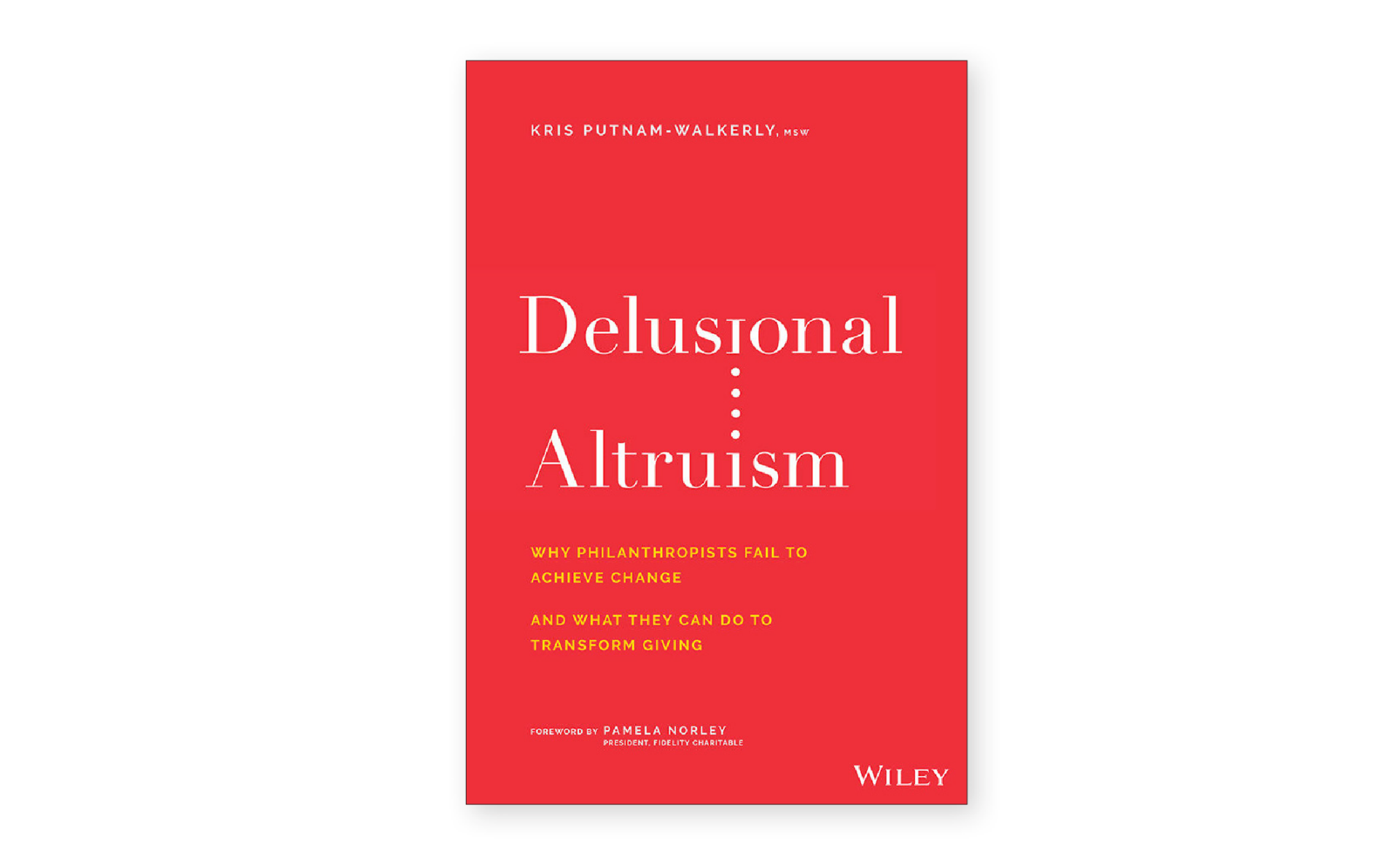
At a conference last fall I had a leisurely conversation with Kris Putnam-Walkerly about her upcoming book, Delusional Altruism—an exchange that resulted in her quoting me on the importance of shared values for successful family philanthropy. We found ourselves together again in early March 2020, at an elbow-bumping event in New York City, as she was awaiting delivery of the first copies of her work. Now, in a charitable environment changing rapidly and unpredictably, her new book is reaching an audience with less time and more stress, as donors confront a current crisis and an uncertain future. Perhaps, though, this is perfect timing for a treatise designed to help philanthropists “get out of their own way.”
The title may strike readers as insulting. Is the author suggesting that many philanthropists are kidding themselves about doing good? Are they accomplishing nothing with their gifts? Not quite.
What Putnam-Walkerly is suggesting is that lots of givers are failing to have the effect they seek. Those of us who have worked in institutional philanthropies recognize many of the symptoms of delusion. The foundation board that routinely approves grant amounts lower than nonprofits request on the assumption that the budgets are “padded.” The foundation executive who spends an inordinate amount of time and money to identify the “just right” consultant—and then fails to follow through on the consultant’s advice. The program officer who includes a large dollop of micromanagement on top of every check she sends out the door. The organizational president who hates to say “no,” leaving staff to piece together hundreds of scattershot initiatives each year. And the many givers who are so fearful that their gifts will be insufficiently consequential, or not measured or reported just as they want, that they fail to contribute anything.
Using a mix of real-life stories and snappy advice, Delusional Altruism reassures donors that they can get past their fear and their “scarcity mentality.” For new and experienced funders alike, the book is an easy read. Seven chapters on the symptoms of delusion are followed by seven chapters on the cures. Numbered and bulleted lists abound. The presentation makes it possible to move through the book quickly, while allowing readers to stop and more fully digest those lessons which strike a chord. Unfortunately, this also leads to unnecessary repetition (particularly around time management) and, occasionally, to inapt comparisons. A random list of “bad behaviors” lumps together a program officer who doesn’t always read grant reports with a sexual harasser.
The strongest parts of this treatise contain valuable advice to donors: Understand clearly what you want to accomplish. Remember why you want to achieve it. Don’t rush too quickly to the how. Avoid spending so much time worrying about the best grantmaking strategy that you ignore other valuable options. Don’t forget that timeliness is crucial to success.
The author’s two chapters on strategy are well done. Her recommendation to ask, “What should be abandoned?” is refreshing. Equally noteworthy is her reminder that while some research is necessary for wise grantmaking, especially in issue areas where you lack knowledge, fear of making a mistake can be paralyzing and result in missed opportunities to make a difference. “Sometimes,” she counsels, “you just need to do it and learn.”
Fear of making a mistake in grantmaking can be paralyzing and result in missed opportunities to make a difference.
The book’s practical suggestions for simplifying and speeding up the grantmaking process are already being implemented by some foundations in response to covid-19: Reduce bureaucracy, streamline applications, expedite the approval process, provide general-operating support, offer multi-year grants, trust your grantees, be trustworthy yourself, and take risks worth pursuing. By May, nearly 750 foundations had signed a pledge to adopt many of these practices during the coronavirus crisis, simultaneously promising to “consider adjusting our practices more fundamentally in the future, in more stable times, based on all we learn.”
This reviewer wishes that Putnam-Walkerly had also discussed how a savvy living donor or a powerful donor-intent statement might hasten the management and grantmaking changes she advocates. She says she has known philanthropists who refined their giving by “living and breathing their values.” Alas, she doesn’t follow through with examples or information her readers might apply to their own situations.
Ultimately, Americans shouldn’t be intimidated or discouraged by the author’s warnings about “delusional altruism.” Our deep commitment to generosity, so rare historically, and precious in any society, is able to compensate for many of our human shortcomings as givers. The author acknowledges midway through her book that, “You already know 80 percent of the answer to any question you have about philanthropy.” Getting that last 20 percent right is a noble goal for any grantmaker, and worth pursuing diligently—but without crippling criticism or guilt.
